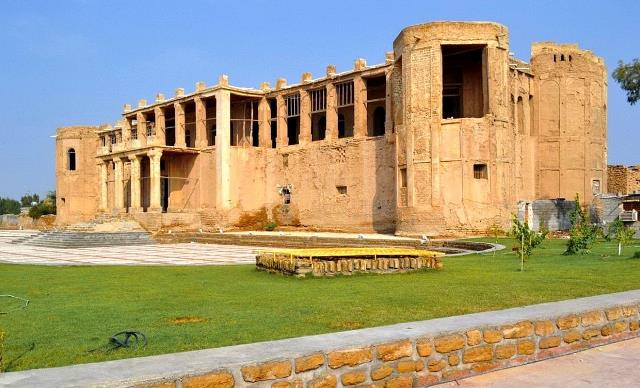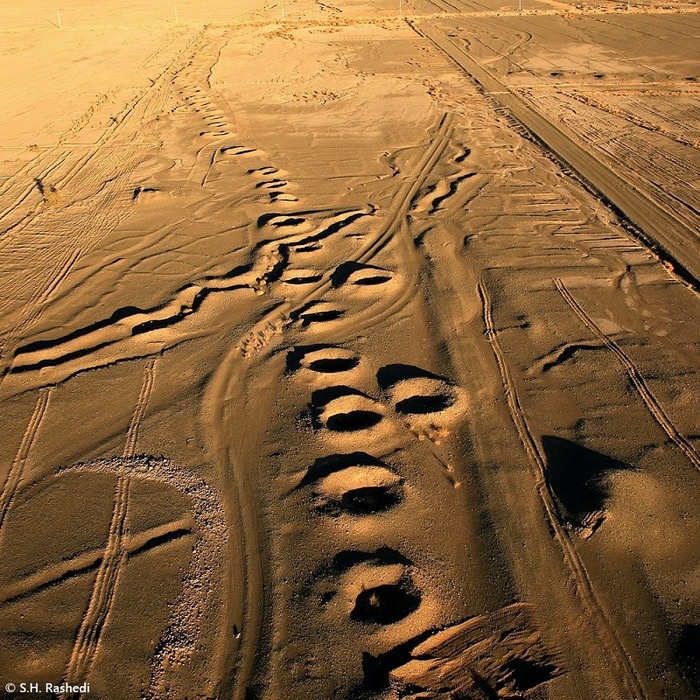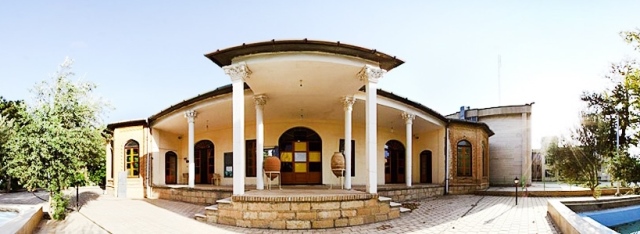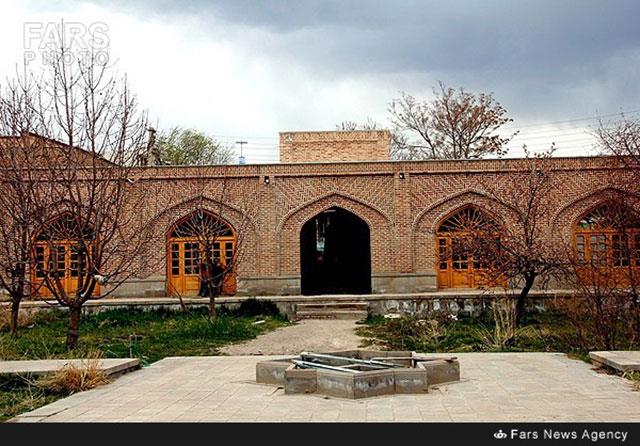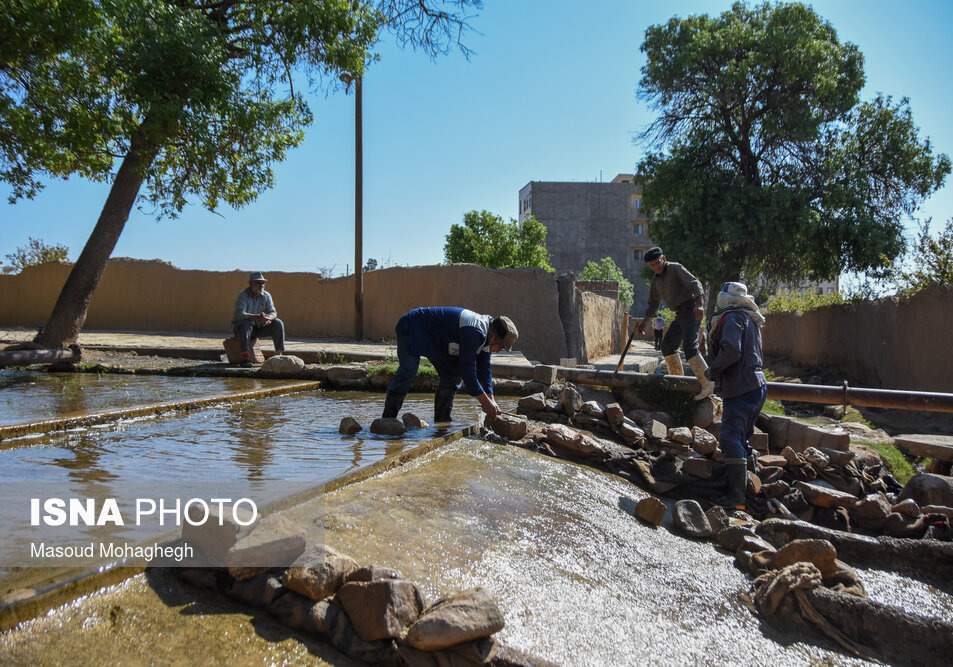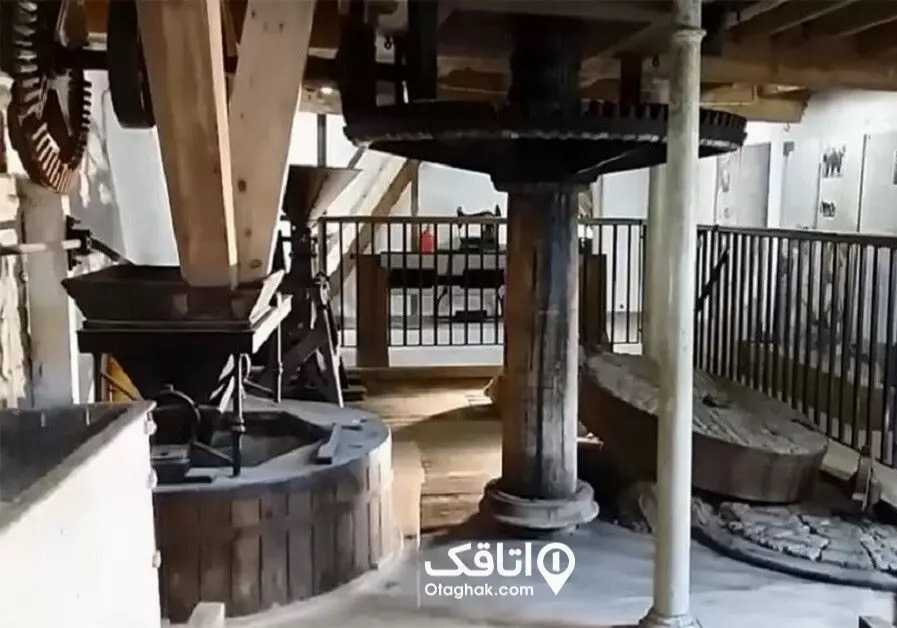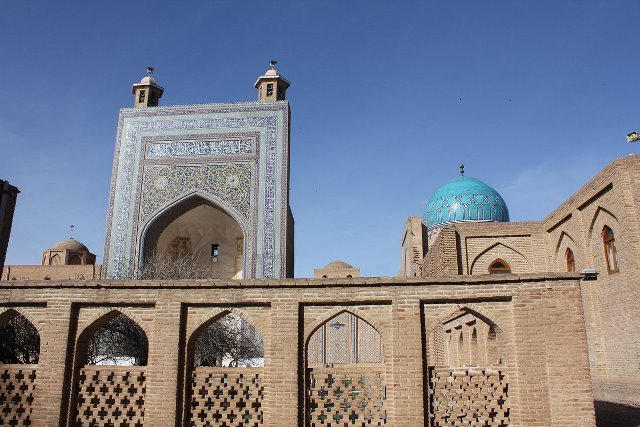
Sheikh Ahmad-e Jam Mausoleum Complex
The Arab historian, Ahmad ibn Yahya al-Balazari (Al-Baladhuri), was the first person to mention the name of this region as “Zaam” in his book, Futuh al-Buldan, in the third century AH/10th century AD).
The complex with an area of 64,000 square meters is located in the remains of an old village that formed the original core of the city of Torbat-e Jam. Today, this complex can be seen as a suburban area (of Torbat-e Jam) comprising old tombs, mosques, and cemeteries with the following components:
The entrance door, the courtyard, Sheikh Jam’s mausoleum, some raised tombstones, a porch, a vault, the Kermani Mosque, the White Dome, the Saracheh, the New Jame’ Mosque, the Atiq (old) Mosque, the Firoozshahi School, or Firoozshahi Dome, a water reservoir, and an underground mosque.
As a result of infiltration of water in the foundation of the buildings - caused by the leveling of the area inside the mausoleum for constructing of a fountain and adding landscaping - in the year 1972, some of the buildings began to face destruction to some extent, the effects of which can be clearly noticed.
The entrance door includes an “arch-shaped portal’ or “doorway threshold” with a wooden door and two-story arches on both sides; belonging to the Timurid period. The floor of the courtyard is covered with stone slabs, and Sheikh Jam’s tomb - with a collection of carved white and black marble stones and two erected tombstones above and below the grave of the Sheikh and an old pistachio tree that has grown between them - is located in the middle of it. A beautiful porch with a height of 27 meters is located in front of the vault, which was previously known as the “taq-e darb”. Apparently, this section had been built in the eighth century AH/15th century AD.
Even though the main plan of the building had been as per the Ilkhanate style of architecture, the height of the entrance arch is a few meters lower than the usual size of the Ilkhanate style, and instead of two high minarets, two short minarets have been built in them. The interior of the porch is the access path to the three spaces of the vault, the White Dome, and the Kermani Mosque. The decorations of this collection belong to the Ilkhanate and Safavid periods.
The “Gonbadkhaneh Mosque” is located alongside the porch and at end of the central point of the complex along and its external façade is covered by the surrounding buildings. The building consists of four triangles, two small rooms used aschellehkhaneh(the place in which Sufis would spend forty days, fasting and praying), four hexagonal arches, and three entrances (north, south, and east). The façade of the walls is decorated, right up to where the dome begins, with geometric designs and in terms of their design belong to the eighth century AH/ 15th century AD.
Kermani Mosque is one of the most magnificent buildings of the complex after the vault and it has been named after the builder of the exquisite niche of this section. As a masterpiece of Islamic architectural decorations, this admirable structure has an entrance porch with five openings and an area of about 182 square meters, which includes a “shahneshin” (a special room for the elites of the time) between each side and four small spaces along the walls (used aschellehkhaneh), a niche in the central opening and facing the qibla.
The walls of this mosque are decorated with an inscription written in thulth script, and its ceiling is in the form of a perforated dome with half-domes that are hidden behind the muqarnases, displaying a perfects style of arch-making.
The niche (mihrab) of this mosque has the finest elements of the architectural decorations of this building and consists of a marginal frame, grooves, the arch, column capital, the plasterwork, and unique inscriptions belonging to the eighth century AH/15th century AD.
The “White Dome” or “Porch Mosque” or, in other words, “Arch Mosque” is located on the northwest side of the porch with an approximate area of 64 square meters, the entrance gate of which is adjacent to the entrance of the Kermani Mosque.
This building has four “shahneshin” and its central space - with four small arches - has made it possible to make a narrow dome above it. It has muqarnas decorations and Quranic inscriptions in Kufic script. The exterior walls of the building are made of a combination of bricks and tiles.
“Saracheh” or “SarachehMonastery” or “Farumadi School” is a simple place with narrow verandas on its northern and southern sides and can only be reached from the “white dome”. The rooms built in two stories around the central courtyard of this building, having brick arches are a sign of the existence of a seminary. Some people believe that the Sheikh Jam monastery used to be located in this place and was destroyed and replaced by the “White Dome”.
There is a raised tombstone with two marble slabs at the top and bottom of the grave, similar to the grave of Sheikh Jam, in the middle of the courtyard of this section, which is that of one of the followers of the Qadiriyya Sufi order.
On the southeast side of the dome is the “Old Jame’ Mosque”. This building with an approximate area of 484 square meters with two-storyshabestansand a rectangular space along the niche is divided into two parts by the east and west porches. From its middle point, another porch passes on the north-south side and a dome has been built at the intersection of these two porches. These two porches have two-story arches that surround the four sides of the mosque in the form of empty spaces.
The New Jame’ Mosque is located behind the vault and the porch of the complex ad has no exterior decorations. Its dome is located on a large intersected square and four quarter domes are built between these four arches and smaller arches rest on the dome. A quarter of the domes located at the corners are closed by a half dome and have a combination of plasterwork prisms.
There is a tall and large turquoise dome on the western side of the complex overlooking the courtyard of the tomb, a building with a cruciform plan and four porches known as the green dome. Apparently, this dome has two discrete middle shells that are built on the cellar of the tomb the exterior façade of which has been decorated with brick and tilework. With an area of 110 square meters, this building includes fourshahneshinand two arches in the eastern and western ones. The niche is located in the western arch. This building is attributed to the Timurid period.
There is a water reservoir adjacent to the entrance of the tomb made of bricks, which belongs to the time of Shah Abbas Safavid (1010 AH) and was restored during the reign of Naseruddin Shah Qajar.
The buildings that were built on top of the water reservoir were used as a seminary up to 90 years ago and since then they were changed into a place for teachers and teachers. Presently, this place is used as the office of the Cultural Heritage Organization of Torbat-e Jam.
The underground mosque is the last remaining building of this complex, which is next to the water reservoir and consists of two winter and summer parts. The winter part is below the level of the passage and the summer part is above this space. The last part has no cover and a niche can be seen there. The place is surrounded by a brick wall.
There is a staircase right after the entry point of the mosque that leads to the undergroundshabestan. Thisshabestanconsists of six thick quadrangular columns. Parts of the roof of this mosque are in the form of a dome that is formed between four pillars. This section has expanded over time, but its main foundation belongs to the Safavid era.
Apart from the above buildings, there had been some other buildings in this complex such as Amirshah Malek School, which do not exist anymore.
Sources:
- Fasihi Khavafi, Mujmal, Vol. 3, Edited by Mahmoud Farrokh, Bastan Bookstore, Mashhad, 1981
- Saber Moghaddam, Faramarz, Architectural-Mausoleum Complex of Sheikh Ahmad Jam, 2004
- Glembeck, Lisa, The Historical Complex of Torbat-e Jam, translated by Bagher Shirazi, Asar Periodical, No. 10/11, 1085
- Labbaf Khaniki, Rajabali, The Cultural Heritage of Khorasan, Organization of Cultural Heritage, Tehran, 1999
- Wilber, Donald, The Architecture of Islamic Iran: The Ilkhanate Period, translated into Persian by Abdollah Mazyar, Moallefan and Motarjeman Co., Tehran, 1982.
- The Technical Archive of the Jam Mausoleum, Directorate of Cultural Heritage of Khorasan, Asar Periodical
- Fazel, Ali, Biography and Works of Sheikh Jam, Tous Publications, 1994
- Archeological Reports on Saracheh, Directorate of Cultural Heritage
- Pirnia, Mohammad Karim, The Styles of Iranian Architecture, Bonyad Publications, 2004
- Glembeck, Lisa and Wilber, Donald, The Islamic Architecture of Iran and Turan: The Timurid Period, translated into Persian by Mohammad Yousef Kiani, Organization of Cultural Heritage of Iran, Tehran, 1986
| Name | Sheikh Ahmad-e Jam Mausoleum Complex |
| Country | Iran |


Choose blindless
Red blindless Green blindless Blue blindless Red hard to see Green hard to see Blue hard to see Monochrome Special MonochromeFont size change:
Change word spacing:
Change line height:
Change mouse type:


.jpg)


.jpg)

